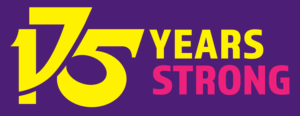The General Teaching Council for Scotland (GTCS) was set up in 1965: one of the first teaching councils in the world. The EIS was involved in its establishment, and has continued to be involved in every step of its development.
The establishment of the GTCS came about following concerns raised by teachers – the majority of whom were EIS members – about the employment of unqualified teachers. At the time, there were around 2,000 unqualified teachers working in Scottish schools. Two prominent EIS officials, Arthur Houston and David Lambie, organised a meeting in Glasgow to argue the case for the formation of a teaching council.
This meeting was attended by more than 200 teachers: many more than originally anticipated. It led, eventually, to the first strike action engaged in by Glasgow teachers, closing 44 schools and giving 130,000 children an uncovenanted holiday. Meetings during the week passed resolutions demanding the setting up of a teachers’ elected council – a proposal that later came before the annual general meeting of the Institute the following month.
Following the Glasgow teachers’ strike, Lord Wheatley, a Labour politician and judge, was commissioned to produce a report into this issue. His committee of 22 included eight representatives from the EIS. Its recommendations, published in 1963, led to the foundation of the GTCS.
Anthony Finn, a long-time EIS member and activist and chief executive of the GTCS from 2008 to 2013, says that, while teachers might not wake up on the first day of a school session expressing joy that they still had a teaching council, they would not welcome the risk to the profession that might ensue if it were to be abolished.
Acknowledging that the views of the EIS and the GTCS have not always aligned, he says, “The EIS has had a consistent – and largely very positive – influence, in ensuring that high standards of professionalism are maintained by the GTCS in a manner that protects teaching as a profession, and recognises the needs of teachers. This has been a delicate challenge for the EIS.”
ACKNOWLEDGEMENTS:
Research, interviews and substantive writing:
Adi Bloom
Design and lay-out:
Stuart Cunningham and Paul Benzie
Additional writing and research:
EIS Comms Team and assorted staff members
Printed by:
Ivanhoe Caledonian, Seafield Edinburgh
Photography:
Graham Edwards, Mark Jackson, Elaine Livingston, Toby Long, Ian Marshall, Alan McCredie, Alan Richardson, Graham Riddell, Lenny Smith, Johnstone Syer, Alan Wylie


Thanks to the many former activists and officers who gave of their time to be interviewed and taken a stroll down memory lane. And of course a very special thanks to the EIS members who created this history through their activism and commitment to the cause of Scottish Education.
© 2022 The Educational Institute of Scotland